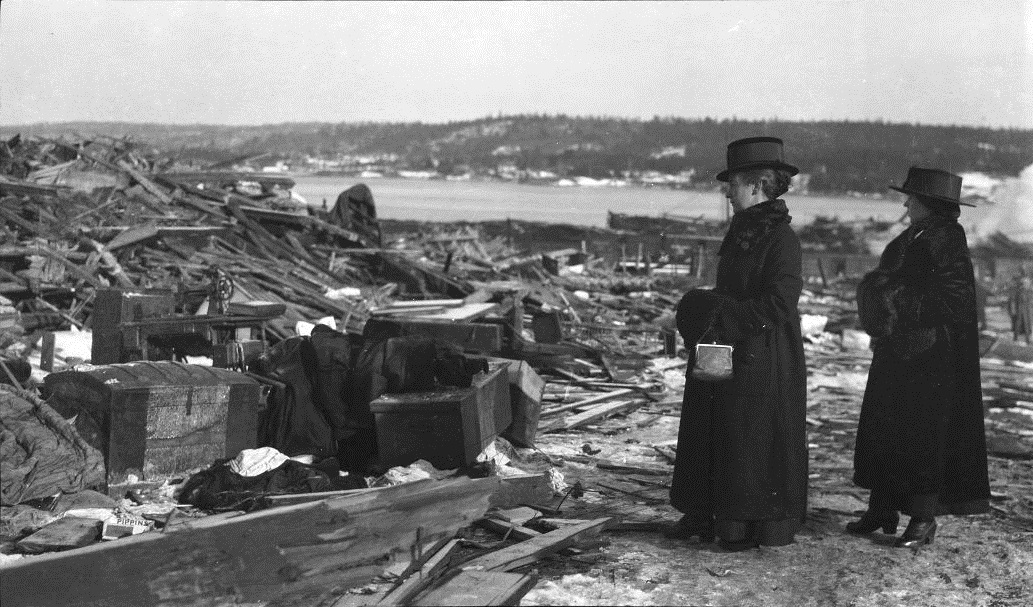Article
White-Collar Crime
White-Collar Crime consists of occupational crime and corporate crime. Occupational crime refers to offences committed against legitimate institutions (businesses or government) by those with "respectable" social status.

Enter your search term
Signing up enhances your TCE experience with the ability to save items to your personal reading list, and access the interactive map.
Create AccountArticle
White-Collar Crime consists of occupational crime and corporate crime. Occupational crime refers to offences committed against legitimate institutions (businesses or government) by those with "respectable" social status.
"https://development.thecanadianencyclopedia.ca/images/tce_placeholder.jpg?v=e9dca980c9bdb3aa11e832e7ea94f5d9" // resources/views/front/categories/view.blade.phphttps://development.thecanadianencyclopedia.ca/images/tce_placeholder.jpg?v=e9dca980c9bdb3aa11e832e7ea94f5d9

Article
White Fox, Sask, incorporated as a village in 1941, population 364 (2011c), 348 (2006c). The Village of White Fox is located about 130 km east of Prince Albert, just north of Nipawin and the Saskatchewan River. The village is named for the White Fox River which flows through the district.
"https://development.thecanadianencyclopedia.ca/images/tce_placeholder.jpg?v=e9dca980c9bdb3aa11e832e7ea94f5d9" // resources/views/front/categories/view.blade.phphttps://development.thecanadianencyclopedia.ca/images/tce_placeholder.jpg?v=e9dca980c9bdb3aa11e832e7ea94f5d9

Article
A government white paper is a Cabinet-approved document that explains a political issue and proposed legislation to address it. The purpose of a white paper is to introduce a new government policy to test the public’s reaction to it. The name derives from the custom of binding the document in white paper, rather than using a cover page. White papers are different from green papers, which seek public reaction not to new policy but to more general proposals. The most controversial white paper in Canada was issued in 1969; it sought to redefine the relationship between the federal government and Indigenous peoples. (See The 1969 White Paper.)
"https://d2ttikhf7xbzbs.cloudfront.net/media/media/a9b09afc-fa9f-4e3d-a200-bb0fb6bbc844.jpg" // resources/views/front/categories/view.blade.phphttps://d2ttikhf7xbzbs.cloudfront.net/media/media/a9b09afc-fa9f-4e3d-a200-bb0fb6bbc844.jpg

Article
The White Paper on Employment and Income of 1945 described the Canadian government's immediate postwar fiscal and economic policies. Presented to Parliament by the Honourable C.D.
"https://d2ttikhf7xbzbs.cloudfront.net/media/media/5b52b570-6e9b-476a-94a9-af4ca135ac51.jpg" // resources/views/front/categories/view.blade.phphttps://d2ttikhf7xbzbs.cloudfront.net/media/media/5b52b570-6e9b-476a-94a9-af4ca135ac51.jpg

Article
A 6-volume review of foreign policy conducted 1968-70 by the Department of External Affairs (now FOREIGN AFFAIRS AND INTERNATIONAL TRADE) with the involvement of many other departments and agencies, invited academics, business people and others.
"https://development.thecanadianencyclopedia.ca/images/tce_placeholder.jpg?v=e9dca980c9bdb3aa11e832e7ea94f5d9" // resources/views/front/categories/view.blade.phphttps://development.thecanadianencyclopedia.ca/images/tce_placeholder.jpg?v=e9dca980c9bdb3aa11e832e7ea94f5d9

Article
The White Pass & Yukon Route railway was built to meet the demand for transportation to the gold fields of the Yukon River basin during the Klondike Gold Rush. Completed in 1900, it was a feat of engineering and one of the steepest railways in North America. It ran 177 km from Skagway, Alaska, to Whitehorse, Yukon. Today, tourist rail excursions run on a portion of the original line.
"https://d2ttikhf7xbzbs.cloudfront.net/media/new_article_images/WhitePassYukonRoute/WPYR_Cantilever_Bridge.jpg" // resources/views/front/categories/view.blade.phphttps://d2ttikhf7xbzbs.cloudfront.net/media/new_article_images/WhitePassYukonRoute/WPYR_Cantilever_Bridge.jpg

Article
Whitefish, common name for several freshwater fishes of class Actinopterygii, family Salmonidae (salmon), subfamily Coregoninae (sometimes elevated to family rank).
"https://d2ttikhf7xbzbs.cloudfront.net/media/media/4f9f8ed4-f2f7-4de9-a6c7-8f5dd0cfd4b2.jpg" // resources/views/front/categories/view.blade.phphttps://d2ttikhf7xbzbs.cloudfront.net/media/media/4f9f8ed4-f2f7-4de9-a6c7-8f5dd0cfd4b2.jpg

Article
Who Has Seen the Wind (Toronto and Boston, 1947), a novel by W.O. Mitchell, tells the story of a prairie boy's initiation into the mysteries of life, death, God, and the spirit that moves through everything: the wind.
"https://development.thecanadianencyclopedia.ca/images/tce_placeholder.jpg?v=e9dca980c9bdb3aa11e832e7ea94f5d9" // resources/views/front/categories/view.blade.phphttps://development.thecanadianencyclopedia.ca/images/tce_placeholder.jpg?v=e9dca980c9bdb3aa11e832e7ea94f5d9

Article
Wholesalers (also called distributors) buy goods for resale to retailers (see RETAIL TRADE), industrial, commercial, governmental, institutional and professional users or to other wholesalers. They also act as agents in connection with such sales.
"https://development.thecanadianencyclopedia.ca/images/tce_placeholder.jpg?v=e9dca980c9bdb3aa11e832e7ea94f5d9" // resources/views/front/categories/view.blade.phphttps://development.thecanadianencyclopedia.ca/images/tce_placeholder.jpg?v=e9dca980c9bdb3aa11e832e7ea94f5d9

Article
The whooping crane (Grus americana), standing almost 1.5 m high, is the tallest North American bird.
"https://d2ttikhf7xbzbs.cloudfront.net/media/media/f7b81a02-ac7d-4084-9c6e-019bb6ecf7c7.jpg" // resources/views/front/categories/view.blade.phphttps://d2ttikhf7xbzbs.cloudfront.net/media/media/f7b81a02-ac7d-4084-9c6e-019bb6ecf7c7.jpg

Editorial
The following article is an editorial written by The Canadian Encyclopedia staff. Editorials are not usually updated.
"https://development.thecanadianencyclopedia.ca/images/tce_placeholder.jpg?v=e9dca980c9bdb3aa11e832e7ea94f5d9" // resources/views/front/categories/view.blade.phphttps://development.thecanadianencyclopedia.ca/images/tce_placeholder.jpg?v=e9dca980c9bdb3aa11e832e7ea94f5d9

Macleans
The battle between doctors and patients’ families has only just begunThis article was originally published in Maclean's Magazine on October 18, 2013
"https://development.thecanadianencyclopedia.ca/images/tce_placeholder.jpg?v=e9dca980c9bdb3aa11e832e7ea94f5d9" // resources/views/front/categories/view.blade.phphttps://development.thecanadianencyclopedia.ca/images/tce_placeholder.jpg?v=e9dca980c9bdb3aa11e832e7ea94f5d9

Excerpt
A major feature of the 1917 Halifax Explosion was the high loss of life among not just men but also women and children. The death of male heads of household, or of their wives, proved highly disruptive for family life and created a major challenge for those providing assistance to the survivors.
"https://d2ttikhf7xbzbs.cloudfront.net/media/media/16d8bd85-267a-4a27-a90b-c6332d9eec71.jpg" // resources/views/front/categories/view.blade.phphttps://d2ttikhf7xbzbs.cloudfront.net/media/media/16d8bd85-267a-4a27-a90b-c6332d9eec71.jpg

Article
A wigwam is a domed or cone-shaped house that was historically used by Indigenous peoples. It was prevalent in the eastern half of North America before the era of colonization. Today, wigwams are used for cultural functions and ceremonial purposes. (See also Architectural History of Indigenous Peoples in Canada.)
"https://d2ttikhf7xbzbs.cloudfront.net/media/media/f334ab17-d8ce-4754-a97a-5d2035880401.jpg" // resources/views/front/categories/view.blade.phphttps://d2ttikhf7xbzbs.cloudfront.net/media/media/f334ab17-d8ce-4754-a97a-5d2035880401.jpg

Article
Over 200 species of small, fleshy, wild fruits occur in Canada. Most people consider them all “berries” but, technically, they are classed in different categories. These categories include drupes (e.g. cherries, elderberries), pomes (e.g. saskatoon berries), true berries (e.g. gooseberries, blueberries) and aggregate fruits (e.g. raspberries, strawberries). In this article “berry” is used in its less technical sense. The following are favourite Canadian wild berries.
"https://d2ttikhf7xbzbs.cloudfront.net/media/new_article_images/WildBerries/4744108143_2507ee0b47_z.jpg" // resources/views/front/categories/view.blade.phphttps://d2ttikhf7xbzbs.cloudfront.net/media/new_article_images/WildBerries/4744108143_2507ee0b47_z.jpg
